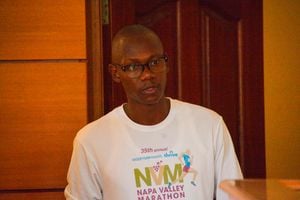Blaming evil spirits for typing errors
What you need to know:
- The most famous judicial typos in Kenya, however, are those that were made in the historic Supreme Court judgment, Petition No 5 of 2013 on the disputed presidential elections.
Last week, I was haunted by a mischievous demon that derives pleasure from introducing typographical errors. But this time round I didn’t realise he had visited on me. Justice Nzioki wa Makau of the Industrial Court e-mailed me to point out the typo.
He said the name of the judge who handled the Ruchachu case is Jairus Ngaah, not Jarius Nyagah, as I had written in my commentary on why police want to be debt collectors.
Traditionally, scribes blame typos on evil spirits, known by such names as printer’s devils, gremlins, elves, imps, goblins, and invisible dwarfs. It’s a form of scapegoating.
I had the correct name right in front of my eyes. But, when typing, the typo demon added “y” and transposed “g” to form the name “Nyagah”. My apologies to Justice Ngaah.
The typo fairies afflict almost every writer, including journalists and judges. Journalists are luckier because they have sub-editors who catch typos within their ken. I don’t know whether judges have equivalent correctors.
Typos in judgments can sometimes have big consequences. On November 30, 2006, for example, Justice Luka Kimaru set free Jeniffer (sic) Chebet Masaai because of a typo. She had been jailed for five years by a magistrate for trafficking narcotics and possessing one python skin.
CANNOT BE OVERLOOKED
She appealed and Justice Kimaru agreed with her that the plea of guilty entered by the magistrate was defective. She had admitted to the charges by stating the charges were true, but the magistrate recorded: “Plea of not guilty entered for the accused.”
Justice Kimaru said while the magistrate made a typographical error when he recorded the plea of “not guilty” instead of “guilty”, such an error is so fundamental that it goes to the root of the entire plea-taking exercise. “It is not a mistake which can be overlooked or glossed over,” he said.
The most famous judicial typos in Kenya, however, are those that made in the historic Supreme Court judgment, Petition No 5 of 2013 on the disputed presidential elections. The typos — most importantly misnumbered articles of the Constitution cited by the judges — were later corrected.
But the typo demons — probably nyawawa from the Lakeside — have refused to leave the 129-page judgment currently posted on the Judiciary website.
One of the petitioners is still referred to at paragraph 8 on page 4 as “Flowrence” instead of “Florence”. The IEBC chair is still referred to, in three instances, as “Isaack” instead of “Issack”.
One of the parties in the Zambian case the judges cited is still referred to as “Fredrick” instead of “Frederick”. And “p” is omitted from this crucial sentence at paragraph 251 (c) page on 104: “The administrative arrangements put in lace to facilitate the registration process are simple, transparent and accessible.”
Those typos do not affect the reasoning in the judgments. All the same, judgments should be free of typos. But which scribe is going to throw the first stone? Not this one.





